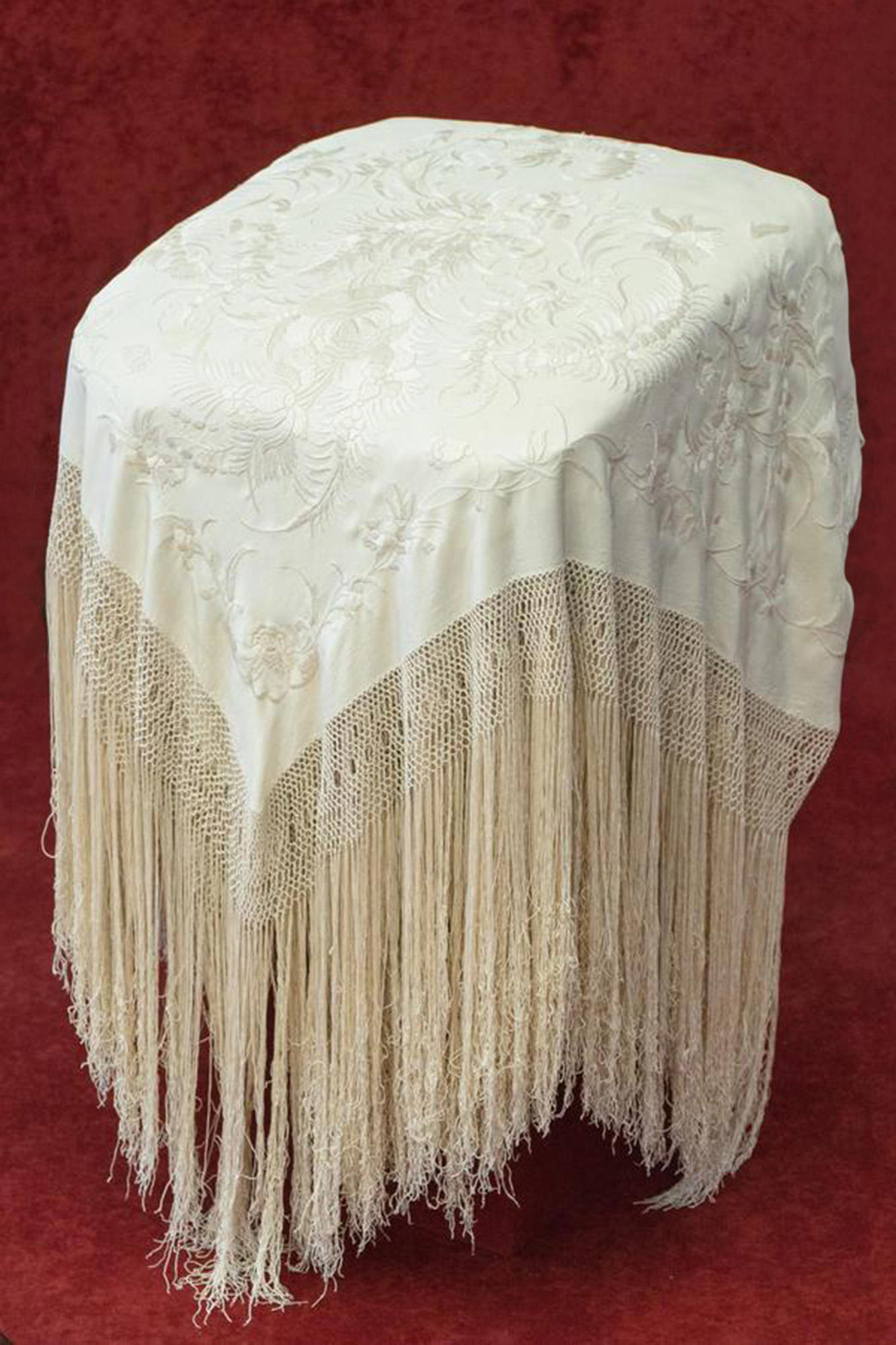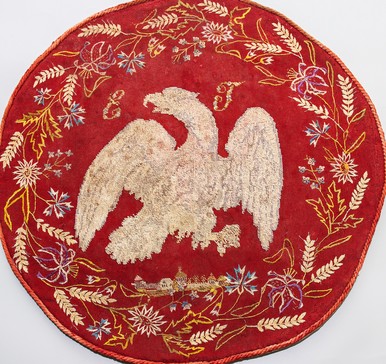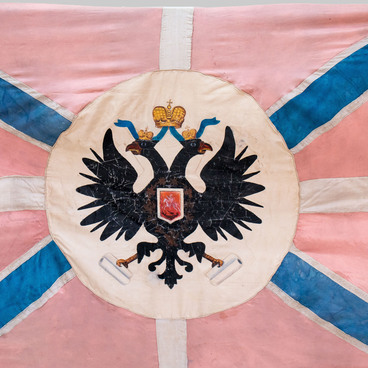The embroidered shawl made of natural silk and decorated with a crochet pattern belonged to Empress Alexandra Feodorovna, the wife of Nicholas II. Such a garment could serve both as a headdress and a mantle. Chrysanthemums and interlaced branches covered with buds were embroidered with satin stitch in the shawl corners to match the fabric. In the center, the fabric remained smooth and without any pattern. Around the perimeter, the shawl was crocheted with “lattice stitch” and decorated with long tassels of twisted ivory silk threads that matched the fabric as well.
Manila Women’s Shawl
Creation period
end of the 19th century – beginning of the 20th century
Dimensions
200х200 cm
Technique
silk; sewing, crochet, and embroidery (satin stitch)
5
Open in app#1
Unknow author
Manila Women’s Shawl
#2
#5
There were several similar mantles of different colors in the Empress’s wardrobe. The list of clothes that belonged to the Romanov family included
‘two thin silk green shawls of oriental type with a yellow-pink pattern and a crimson, yellow, and blue border, as well as another yellow shawl with a green-crimson pattern’.
#6
Alexandra Feodorovna presented the white shawl that now is part of the Tobolsk Historical and Architectural Museum collection to Doctor Isaac Syano’s wife. The empress met him in Yekaterinburg, where the Romanov family was exiled in 1918. Prince Alexey was seriously ill. His personal physician Yevgeny Botkin treated him, while Syano helped him secretly to search for necessary medicines and special nutrition for the prince. In gratitude for the help, the empress gave her shawl as a gift to Isaac Syano sending it via Botkin. After Syano’s death, his widow lost all her money and had to sell the expensive mantle.
#3
In the Russian Empire, embroidered shawls made of natural Chinese silk were called Manila shawls. They shipped such garments from China to the Philippine port of Manila that belonged to Spain. Manila shawls quickly became an integral part of the Spanish women’s wear: citizens from good families preferred more unpretentious plain colors, while gypsies and flamenco dancers wore brightly embroidered mantles.
#4
Sometimes, Manila shawls were used not only as a garment, but also as a part of the interior decoration. In Spain, they used to decorate balconies with these shawls during holidays. In some houses, the pianos were covered with such mantles. Hence their English name “piano shawl”. However, in China, where such shawls were made, they were not popular: all such garments were exported to other countries.
#7
Tobolsk Historical and Architectural Museum — Reserve
read morehide
00:00
00:00
1x
Manila Women’s Shawl
Creation period
end of the 19th century – beginning of the 20th century
Dimensions
200х200 cm
Technique
silk; sewing, crochet, and embroidery (satin stitch)
5
Open in app
Share



